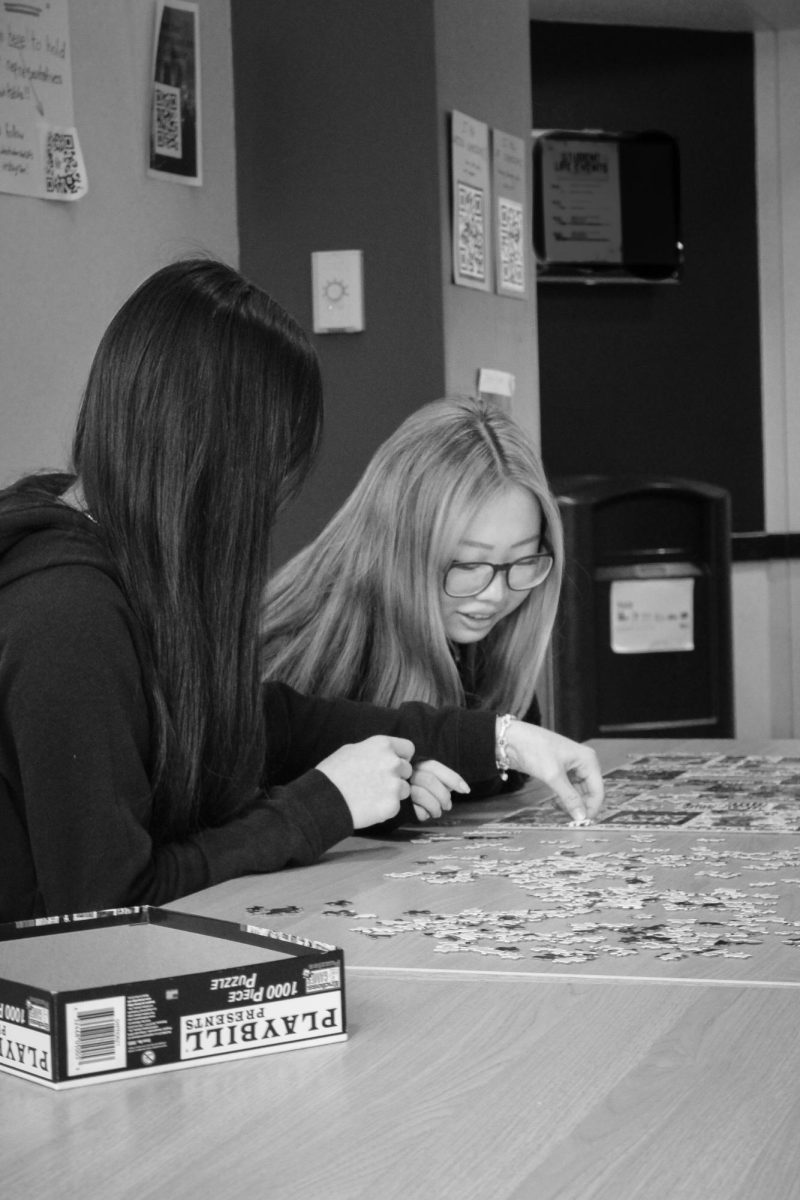
Kendall Dixon '26
During a seven-hour school day, students often find themselves either without work to do, or without a desire to use their free time to complete the homework they have been assigned.
While it has been a customary practice for students to turn to their technological devices during such moments, an alternative activity has become popular in the AFS community: constructing puzzles.
While some might argue that doing homework would be a more productive way to spend free time at school, building puzzles is a relaxing way for students to step away from the business of their daily lives and collaborate with their peers.
While writing a laborious essay or tackling a series of tedious math problems can be an anxiety-inducing endeavor, working on a puzzle is quite the contrary. Even just looking at a puzzle can put your mind at ease. For instance, Sol Moritz ‘24 recently brought his adorable anime puzzle into school for everyone to enjoy.
Depicting a majestic castle surrounded by luscious clouds, the puzzle was overwhelmingly cute. After a stressful class, I would often find myself making a beeline towards the puzzle table (across from U17) in order to relax my mind through the methodical piecing-together of this beautiful work of art.
Apart from myself, judging by the number of people who naturally gravitate towards the puzzles both in the library and the hallway throughout the day, I am sure I am not the only person who grounds themself by partaking in this relaxing activity.
While it is no doubt that puzzles are calming, they promote positive collaboration between students as well. With a bustling student body at AFS, I seldom find myself working on a puzzle alone. It’s fun to talk with friends while working on a project, and puzzles are no exception. In fact, I formed a wholesome friendship with Harrison Shenkman ‘24 through building a series of puzzles with him.
Shenkman and I, as two of the most adept puzzle-builders in the school, spent many hours bonding with each other and wielding our respective talents to complete the latter half of two separate puzzles earlier this semester.
It is healthy and ultimately beneficial for students to work together to complete difficult tasks, making tackling a 1000-piece puzzle with your peers the perfect combination of a brain-teasing and fun activity.
Despite the overwhelming benefits of the presence of puzzles in the AFS community, some still argue that they are a waste of time. With extracurricular club and sport team commitments, it can be difficult for students to get their homework done once the school day is over. Because of this, building a puzzle may seem like a less appealing option than cranking out the last few math problems that are due tomorrow.
While it is typically wise to prioritize homework over seemingly unproductive activities, there is always time for puzzle-building during the school day. It is important to find a healthy balance between work and leisure time, and sitting down for a short while to work on a puzzle is a great way to give your brain the rest it often needs.